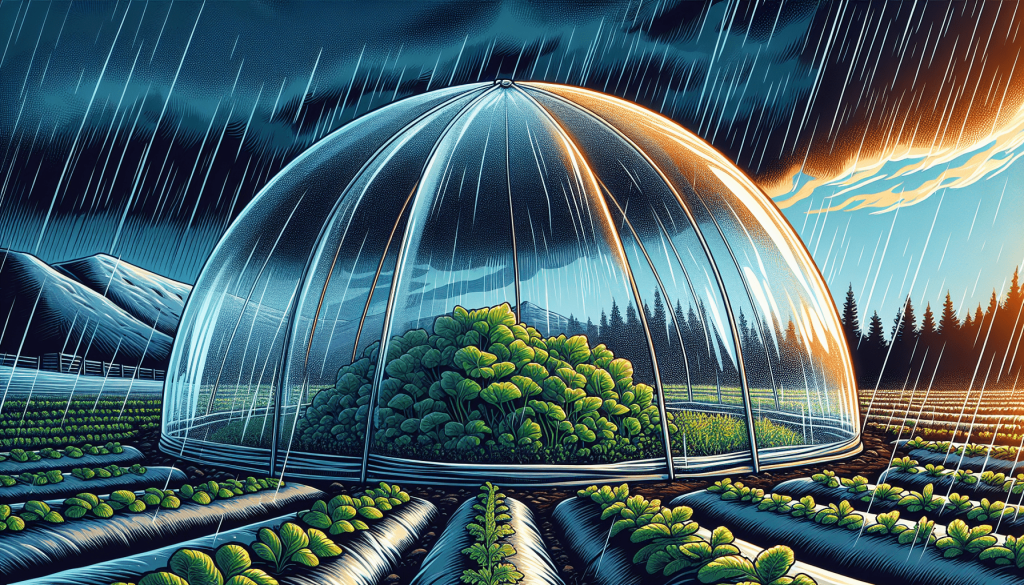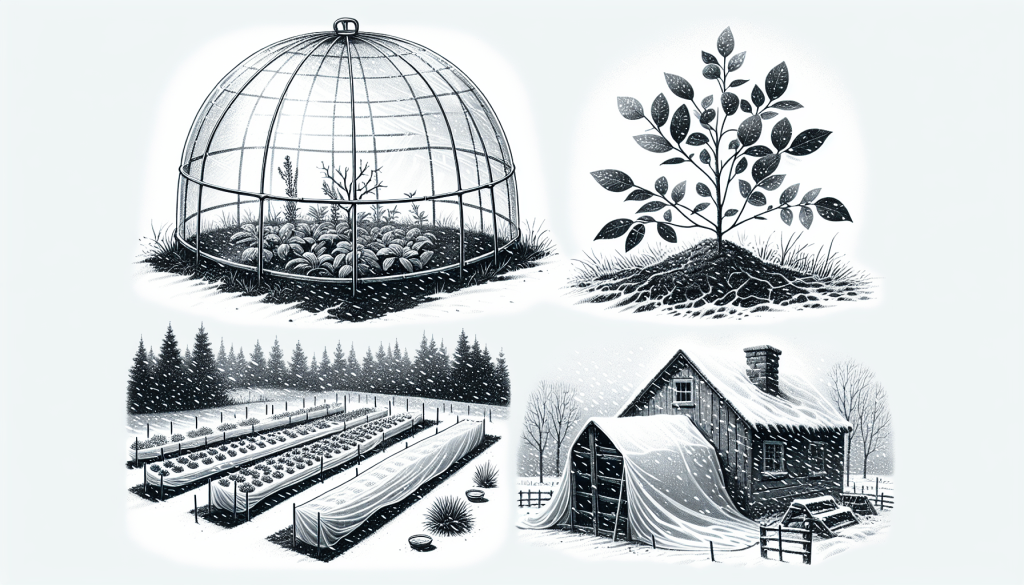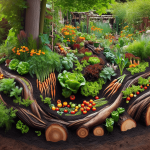This post may contain affiliate links. As an Amazon Associate, we may earn commissions from qualifying purchases.
If you have problems with cold weather conditions, this article will provide you with simple yet effective tips on how to protect your beloved plants from the harsh elements. Discover practical techniques and useful tools that will help maintain the health and vitality of your garden, ensuring that your plants thrive no matter the weather. So, let’s embark on this journey together and learn how to safeguard your plants from frost and extreme weather conditions.

Choosing the right plants
If you are looking for solutions to protect your plants from frost or extreme weather conditions, the first step is to choose the right plants for your garden. This involves researching the climate and hardiness zones in your area. Understanding the specific conditions your plants will be exposed to is essential in determining which plants are suitable for your region.
Consider selecting plants that are well-suited to your region’s climate. Look for varieties that are known to thrive in your specific hardiness zone. These plants are more likely to withstand the challenges presented by extreme weather conditions.
In addition, it’s worth considering native plants that are naturally adapted to your local conditions. Native plants have developed resilience to the climate over time, making them a great choice for withstanding frost or extreme weather events. Plus, native plants often provide food and shelter for local wildlife, contributing to the overall health and biodiversity of your garden.
Preparing plants in advance
Caring for your plants throughout the year is an important part of keeping them healthy and strong, especially in preparation for extreme weather. Regular pruning and trimming help promote strong growth and reduce the risk of damage from heavy snow or wind. Remove any dead or diseased branches to improve the plant’s overall health and prevent potential issues.
Proper care and maintenance also involve keeping your plants healthy throughout the year. This includes providing adequate water, sunlight, and nutrients to support their growth. Regularly monitor soil moisture levels and adjust watering accordingly. Additionally, consider applying organic fertilizers to promote root development and overall plant health.
Providing adequate insulation
To protect your plants from frost or extreme temperatures, it’s important to provide them with adequate insulation. A layer of mulch around the base of plants helps to retain moisture in the soil, regulate temperatures, and provide a protective barrier against frost. Organic materials such as straw, leaves, or wood chips work well as mulch.
In colder climates, using frost blankets or row covers can provide an extra layer of protection. These lightweight fabrics allow light, air, and water to penetrate while shielding plants from freezing temperatures and frost. Secure the blankets or covers over the plants, ensuring they are securely anchored to the ground to prevent wind damage.
Creating barriers around plants using burlap or plastic can also help protect them from extreme weather. This approach is particularly useful for tender plants or those susceptible to frost damage. Wrap the barrier material around the plants, providing an additional layer of protection against cold temperatures and harsh winds.
Watering and soil management
Proper watering and soil management are essential in protecting plants from frost or extreme weather conditions. It’s important to water your plants properly, providing them with enough moisture to stay healthy without over-watering. Over-watering can lead to root rot and other detrimental effects on plant health.
Make sure to water the plants deeply but infrequently, allowing the soil to dry out slightly between watering sessions. This encourages the plants to develop deep, strong root systems. Deep roots are better able to access moisture during dry periods and withstand extreme weather conditions.
In addition to proper watering, improving soil drainage is crucial for plant health and protection against frost. Well-draining soil allows excess water to flow away from roots, preventing waterlogging and potential damage from freezing temperatures. Consider adding organic matter such as compost or peat moss to improve soil structure and drainage capabilities.

Protecting plants in containers
If you have plants in containers, additional steps may be necessary to protect them from frost or extreme weather conditions. One option is to move the containers to sheltered areas, such as a covered porch or garage. This helps to shield the plants from the direct impact of strong winds and freezing temperatures.
Another method is to wrap the containers with bubble wrap or insulation. This provides an extra layer of insulation, helping to regulate temperatures and protect the roots of the plants. Secure the wrap or insulation around the containers, ensuring that the entire pot is covered.
To prevent freezing, elevate containers off the ground. Placing them on pot feet or bricks allows air to circulate underneath, reducing the risk of the pots freezing to the ground. This also helps to prevent excess moisture accumulation, which can lead to root rot during extreme weather conditions.
Utilizing microclimates
In every garden, there are microclimates – areas that have slightly different climate conditions than the surrounding areas. By identifying these warmer spots, you can strategically place your plants to maximize their chances of survival during frost or extreme weather conditions.
Walls or fences can act as heat reflectors, absorbing and radiating warmth. Utilize these structures by positioning temperature-sensitive plants close to them. The reflected heat can provide a slight increase in temperature and protect the plants from frost damage.
Creating windbreaks using hedges or shrubs is another effective way to utilize microclimates. These barriers can deflect strong winds, reducing their impact on fragile plants. By planting wind-resistant shrubs or hedges strategically, you can create pockets of protection within your garden.
Monitoring weather conditions
Staying informed about weather forecasts is crucial when it comes to protecting your plants from frost or extreme weather conditions. Keep track of local weather forecasts, paying attention to temperature fluctuations, frost warnings, or severe weather alerts. This information allows you to plan ahead and take appropriate measures to protect your plants.
Consider installing temperature sensors in your garden to monitor specific areas or microclimates. These sensors provide real-time data, alerting you to any significant drops in temperature that could put your plants at risk. With this knowledge, you can take swift action to protect your plants before the extreme weather hits.
Taking emergency measures
Sometimes, despite our best efforts, extreme weather conditions catch us off guard. In these situations, it’s important to have some emergency measures at hand to protect your plants from frost or other types of damage. One simple method is to cover your plants with old blankets or towels. This provides immediate insulation and protection from freezing temperatures.
If necessary, you can also install temporary heat sources, such as outdoor heaters or heat lamps. These can help raise the temperature around the plants and prevent frost damage. However, it’s essential to use these heat sources with caution and follow all safety guidelines to avoid the risk of fire or other hazards.
For potted plants, consider moving them indoors during extreme weather conditions. Find a suitable location, such as a sunny window or a greenhouse, to provide them with the warmth and protection they need. Make sure to acclimate the plants to the indoor environment gradually to minimize shock.
Protecting against frost
Frost can be particularly damaging to plants, especially tender or young ones. To protect your plants from frost, there are several methods you can employ. Watering your plants before a frost event can help insulate them. Wet soil retains more heat compared to dry soil, which can provide some protection against freezing temperatures.
Using anti-transpirant sprays is another option for frost protection. These sprays create a thin film over the leaves, reducing water loss and protecting the plant from frost damage. Follow the instructions carefully when applying these sprays, as using too much can hinder the plant’s normal functions.
Implementing physical frost protection methods is also effective. Techniques such as using cloches or tents made from plastic or glass can shield individual plants or small areas from frost. These coverings trap heat and create a mini-greenhouse effect, offering temporary protection until the weather conditions improve.
Seeking professional help
When in doubt, it’s always a good idea to seek professional help to ensure the protection of your plants. Consulting with local gardening experts or horticulturists can provide valuable insights specific to your region and garden. These professionals can offer tailored advice on plant selection, care, and protection against extreme weather conditions.
If you find yourself overwhelmed or lacking time to handle the necessary measures, hiring professional gardeners or landscape designers can alleviate the pressure. These experts have experience and knowledge in plant protection and can assist in preparing your plants for frost or other extreme weather events.
Attending workshops or seminars on plant protection can also be beneficial. These educational events provide an opportunity to learn from experienced professionals and acquire new skills and techniques to safeguard your plants. Additionally, interacting with fellow gardening enthusiasts can offer valuable insights and support.
In conclusion, protecting your plants from frost or extreme weather conditions requires careful planning, preparation, and attention to detail. By choosing the right plants, caring for them throughout the year, providing insulation, managing watering and soil, utilizing microclimates, monitoring weather conditions, taking emergency measures when necessary, protecting against frost, and seeking professional help when needed, you can ensure the well-being and longevity of your plants in the face of challenging weather conditions.








